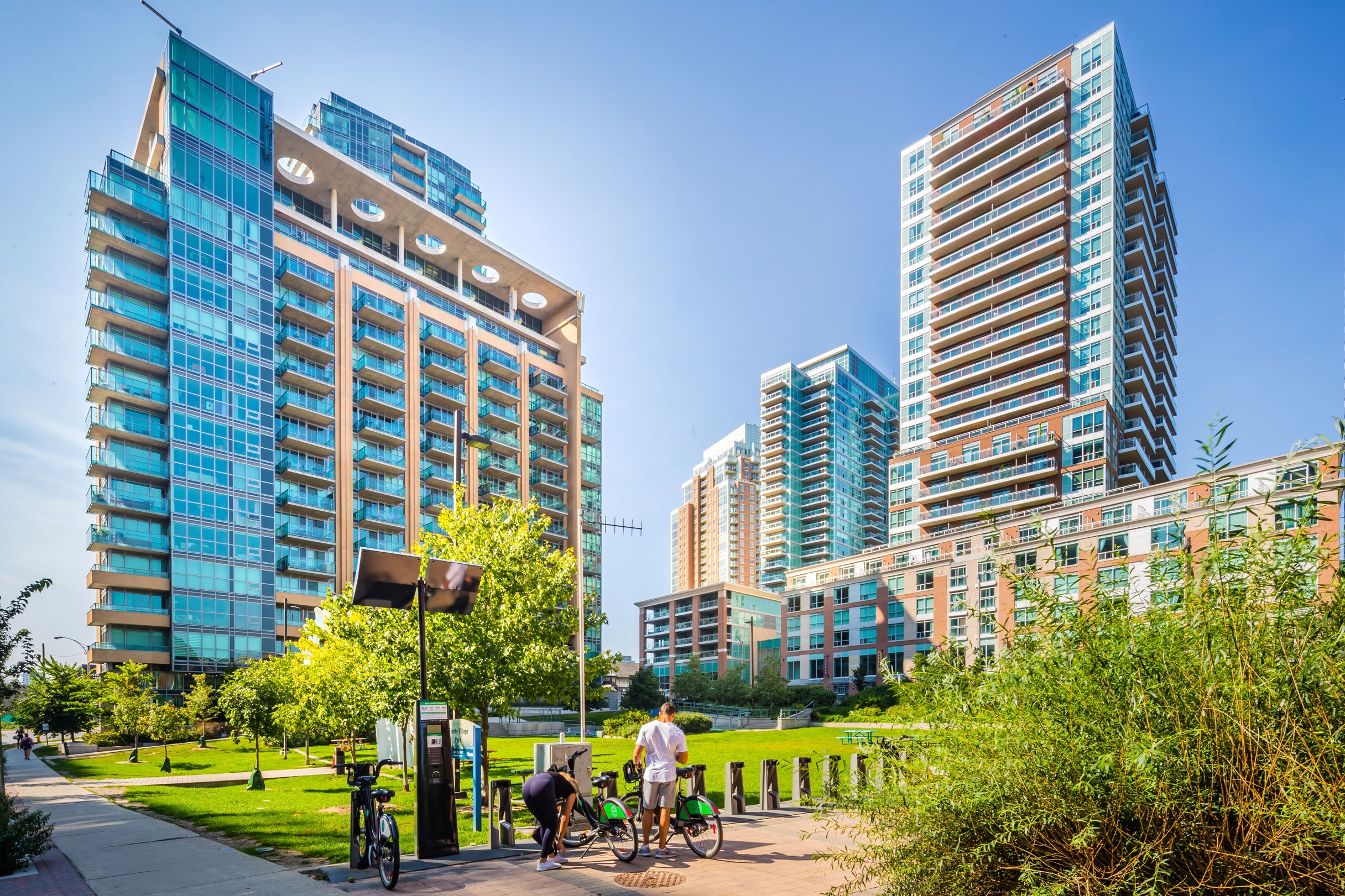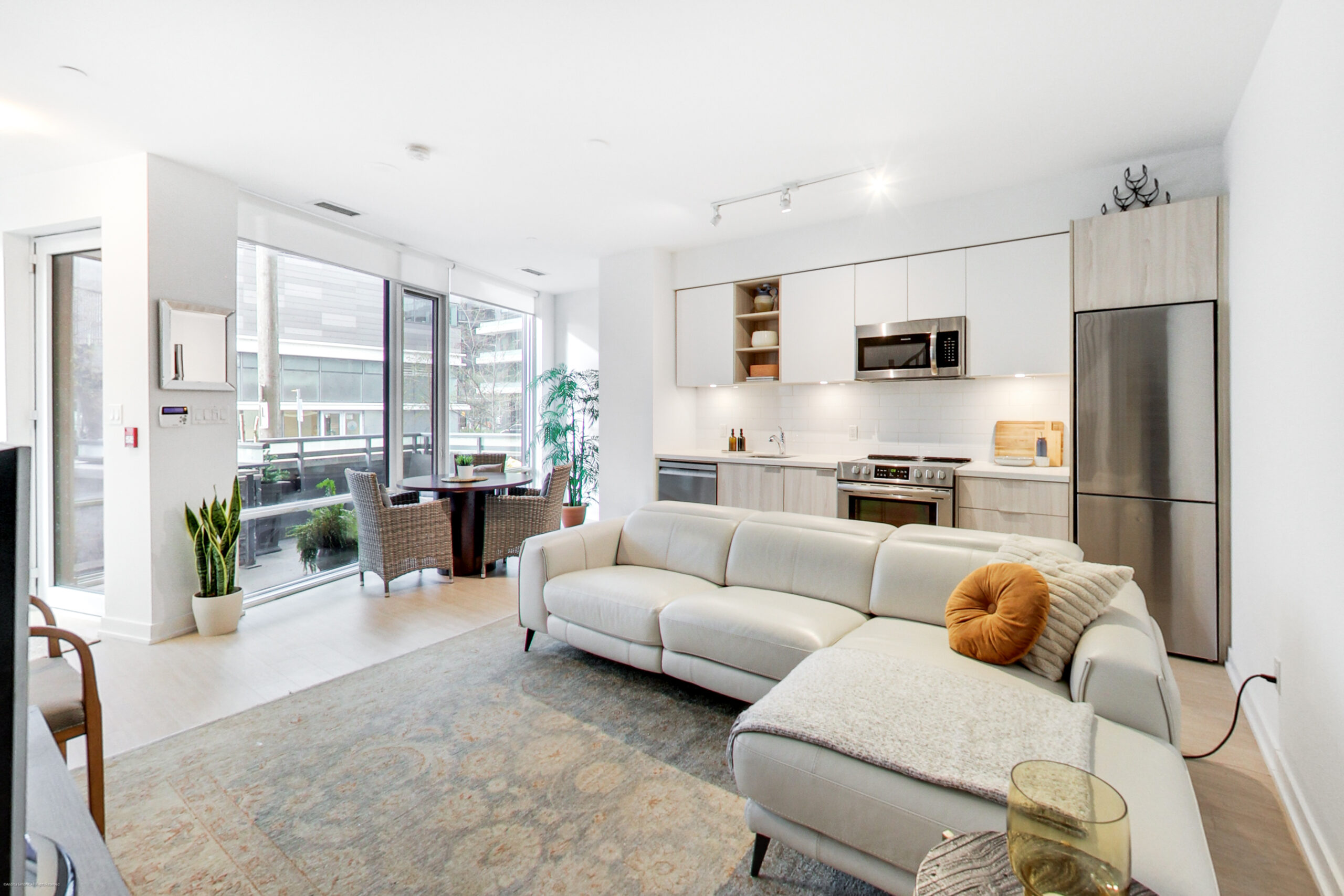
Taking a look at 80 Atlantic Avenue from the outside, you might not know how special the building truly is. Although it may resemble an average new Toronto office building, it’s actually constructed from wood. The walls, support beams, ceilings, and almost everything is wood. Comparatively, other new constructions in Toronto are predominantly concrete and steel. We’ve grown so accustomed to concrete and steel that wood almost seems out of place.
When completed, the building will be unlike anything else currently in Toronto. Designed by Toronto-based architectural firm Quadrangle, 80 Atlantic Avenue will make for five storeys of office and retail space. It’s sure to boast an absolutely beautiful interior. Although wood is generally believed to be more difficult to work with than other construction materials, for Liberty Village residents, they’re likely to appreciate the wooden element as it signifies a sort of classic, down-to-earth feel.
Surprisingly so, 80 Atlantic Avenue won’t be the only wooden building like this in Toronto for long either. Sidewalk Labs’ well-publicized proposal for its high-tech neighborhood in Quayside will manufacture its condos and apartment units from timber. Outside of Toronto, there are wooden structures similar to Liberty Village’s 80 Atlantic Avenue. The University of British Columbia’s eighteen-storey student residence Tallwood House is the tallest in Canada. So all things considered, why isn’t wood used more often in Toronto for multi-storey buildings? Well, the answer’s complex.
Aesthetically, wood’s an absolutely beautiful material. Environmentally, wood also carries numerous benefits. Builders will tell you though, wood is much more difficult to work with than concrete or steel. It requires more energy and more man hours, which elevates cost of construction. Even so, there has been a rise in interest in wood construction. It’s been used in buildings including the National Arts Centre in Ottawa. Although there are reports of wood reducing construction times and reducing costs, there remains some debate as to whether wood actually saves costs.
As a material, the cost of wood depends almost entirely on the local construction market, what bidders consider appropriate, and the willingness of trades to adapt to wood-based methods. For many trades, wood is an unfamiliar product.
For the 80 Atlantic Avenue development in Liberty Village, the cost of wood ended up being more or less similar to concrete and steel. Depending on the project though, wood can easily cost more. In concrete, there are design elements such as tubes to accommodate plumbing which are non-existent in wood. Therefore, to create space for plumbing, one must bore holes manually. A task like this, only few in trades have experience performing as it requires a special drill.
Another sign the construction industry is not ready for wood construction projects is that wood is difficult to source. There are few companies in Canada supplying wood for large construction projects. The wood provided at 80 Atlantic Avenue is coming from Barrie, Ontario’s Timmerman Timberworks. For a business like Timmerman Timberworks to source and then get the wood to a builder, they require six to eight weeks of lead time.
There are also safety concerns such as wood being more prone to catching on fire and burning faster, although supporters of wood construction are quick to counter with the fire risks associated with concrete and steel. Solid wood will char, not burn. When a concrete building catches fire though, the steel rods can melt or dilate and eventually cause concrete to explode.
Thankfully, there are some technological advances that are making working with wood easier. Cross-laminated timber, known as CLT, is made from gluing wood panels at an angle which creates more stability. They’re as strong as concrete yet, five times lighter. CLT is ideal in application floors and load-bearing walls.
Since Ontario’s Building Code was modified in 2015 to allow wood frame structures as tall as six storeys, up from the previous four storey limit, Torontonians have been looking forward to more wooden structures. Sadly, few properties have been developed with wood since then.
Although it’s not clear what the future of wood construction is, for now, we all can admire buildings like 80 Atlantic Avenue. Tenants will include Universal Music, the management consulting and branding firm Jackman Reinvents, and the workspace provider Spaces.




